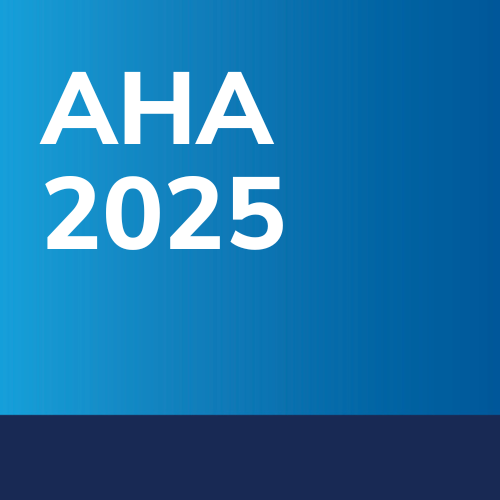It was a terrible start to November on Wall Street. The tech-heavy Nasdaq sank just over 3% in its worst weekly performance since early April. The S & P 500 fell 1.6% for the week. Both stock measures broke three-week winning streaks.This week’s market decline, which followed a strong October, can be chalked up to two reasons. First, investors grew concerned about the eye-watering valuations of stocks tied to artificial intelligence. Case in point: Nvidia lost its $5 trillion market cap designation in a weekly loss of 7%. The weakness in Nvidia was exacerbated by the realization that China would not be opening back up in a meaningful way for the powerhouse of AI chips. While management has not included China sales in its outlook for months, many investors still thought it could happen. Still, we maintain our long-held “own it, don’t trade” thesis on Nvidia. .SPX .IXIC 5D mountain S & P 500 and Nasdaq weekly performance Second, there were emerging signs that the government shutdown, now the longest in U.S. history, was starting to harm the economy. Job cuts last month reached their highest levels for any October in 22 years, according to Thursday’s reading from outplacement firm Challenger, Gray & Christmas. A day later, the latest monthly consumer sentiment survey from the University of Michigan registered nearly its worst reading ever. These reports from private organizations have taken on added importance since the shutdown, which started on Oct. 1 and has delayed most government economic data. During this week of market turmoil, we executed three trades. On Monday, we added to our Starbucks position. The stock has taken a beating with other restaurant names on fears of a weakening consumer. In this case, we think the decline is overblown. After all, the turnaround story under CEO Brian Niccol remains strong. “With shares trading back to their ‘Liberation Day’ tariffs lows in early April, we see this recent weakness as an opportunity to slowly scoop up more,” Jeff Marks, the Investing Club’s director of portfolio analysis, wrote in a trade alert. “Niccol has embarked on an ambitious plan to bring back the coffeehouse atmosphere and fix its stores through a new operating and staffing model called Green Apron Service . It’s taken a few quarters, but the turn has finally started.” The Club also snapped up more Boeing stock Tuesday. Shares dropped significantly after the aircraft maker’s earnings report last week, caused by a larger-than-expected charge on its 777X program. Yes, the quarter was a frustrating setback. But the decline presented a great opportunity for long-term investors like us. “The turnaround under Boeing CEO Kelly Ortberg is still progressing nicely, driven by better execution on its 737 program,” Marks wrote in a trade alert. “With production moving from 38 airplanes per month to 42 — then eventually 47 and 52 under FAA guidance in the future — Boeing’s ability to make and deliver more planes will lead to strong free cash flow generation in the years ahead.” The market’s pullback Thursday gave us a chance to buy more GE Vernova stock. Shares have tumbled as AI-linked names have been scrutinized for their valuations. That’s because GE Vernova is one of the world’s largest producers of gas-fired turbines, which are used to create electricity and electrification products found in data centers. The company’s sales heavily benefit from the insatiable demand for more energy due to the frantic AI infrastructure race. “We are using this downturn to buy more shares since we still have a positive long-term outlook on the need for increased electricity investment,” Marks wrote in another trade alert. Eli Lilly made headlines this week. President Donald Trump on Thursday announced a GLP-1 pricing deal with Lilly and rival drugmaker Novo Nordisk that would lower prices for certain weight-loss treatments in exchange for coverage in Medicare and Medicaid programs. This was huge news for Lilly because it can expand access to Zepbound, increasing the blockbuster weight-loss drug’s total addressable market. Eli Lilly is also behind GLP-1 Mounjaro, but it was not included in the deal. That’s not the only piece of good news for Lilly. Management announced positive mid-stage trial results for its experimental amylin obesity drug. The once-a-week shot called eloralintide was shown to help patients shed pounds while maintaining muscle mass. Shares of Eli Lilly were up 7% for the week. this week. Quarterly earnings and spinoff news were also in focus. Eaton delivered a mixed third-quarter report Tuesday morning, which beat on adjusted earnings per share (EPS) but missed on revenue and organic sales. Although the headline results were uneven, the Club still found bright spots in the release. Overall segment profit and profit margin, for example, beat expectations and reached new quarterly records. DuPont posted a beat on the top and bottom line Thursday morning — less than a week after the spinoff of Qnity Electronics. Shares of DuPont slipped right after because of noise around quarterly numbers due to the split and divestiture of its Aramids business. Still, the underlying fundamentals for the new DuPont look strong, and the stock was our biggest winner on the week, up 16.5% to nearly $40. The Club downgraded shares to our 2 rating . We also adjusted our price target to $44. Solstice Advanced Materials, which recently split from Club name Honeywell , reported earnings on Thursday with no major surprises. There was a 7% topline growth, which was provided when Honeywell posted its own results just two weeks ago. Plus, it was all fairly consistent with what was said at an investor day last month. Texas Roadhouse shared a mixed earnings report Thursday night, posting better-than-expected comps despite concerns of softening consumer spending. However, higher beef prices caused the steakhouse chain to raise its commodity inflation outlook, which has weighed on Texas Roadhouse’s profitability for some time. We’re not giving up on the Club stock yet. Wall Street heard from Qnity on Thursday night, too. Not earnings, we learned about those numbers when DuPont reported, but management delivered a business update after the close, which made us hopeful of the company’s position to keep growing from secular trends like AI in the years ahead. The Club issued a buy-equivalent 1 rating on the stock and a price target of $110. Qnity stock has been volatile and closed Friday just over $92. (See here for a full list of the stocks in Jim Cramer’s Charitable Trust.) As a subscriber to the CNBC Investing Club with Jim Cramer, you will receive a trade alert before Jim makes a trade. Jim waits 45 minutes after sending a trade alert before buying or selling a stock in his charitable trust’s portfolio. If Jim has talked about a stock on CNBC TV, he waits 72 hours after issuing the trade alert before executing the trade. THE ABOVE INVESTING CLUB INFORMATION IS SUBJECT TO OUR TERMS AND CONDITIONS AND PRIVACY POLICY , TOGETHER WITH OUR DISCLAIMER . NO FIDUCIARY OBLIGATION OR DUTY EXISTS, OR IS CREATED, BY VIRTUE OF YOUR RECEIPT OF ANY INFORMATION PROVIDED IN CONNECTION WITH THE INVESTING CLUB. NO SPECIFIC OUTCOME OR PROFIT IS GUARANTEED.
Category: 3. Business
-

Gefurulimab for MG Exhibits Lasting Efficacy, Safety in Topline PREVAIL Trial Data
Over 26 weeks, the complement C5 inhibitor gefurulimab showed its ability to produce statistically significant improvements in Myasthenia Gravis Activities of Daily Living (MG-ADL) total score, a clinically meaningful result, as well as reduce Quantitative Myasthenia Gravis (QMG) total scores at week 4 and week 26.1 These new top-line results from the phase 3, randomized, double-blind, placebo-controlled PREVAIL study (
NCT05556096 ) were presented at the American Association of Neuromuscular & Electrodiagnostic Medicine Annual Meeting by Kelly G. Gwathmey, MD, associate professor at Virginia Commonwealth University (VCU) School of Medicine, director of the VCU amyotrophic lateral sclerosis clinic, and Division of Neuromuscular chief. She is also principal investigator of PREVAIL.Compared with conventional monoclonal antibodies, which typically require intravenous infusion by a health care professional, gefurulimab has the added convenience of being available as a prefilled syringe or autoinjector, Gwathmey explained. Gefurulimab is administered subcutaneously, with its low molecular weight and ability to extend the half-life of albumin—its dual-binding activity blocks C5 activation and binds to the liver-produced protein—key to its weekly administration.2
The adult patients evaluated in PREVAIL had anti-acetylcholine receptor (AChR) antibody-positive (Ab+) generalized
myasthenia gravis (gMG).1 They also had to have Myasthenia Foundation of America (MGFA) class II-IV disease, an MG-ADL score of 5 or higher, and be stable on standard-of-care therapy. They were randomized 1:1 to self-administered weekly gefurulimab (n = 131) or placebo (n = 129) for 25 weeks. The primary end point is change from baseline in MG-ADL total score at week 26, and the secondary end point is change from baseline in QMG total score at week 26. Most patients were female (59.5% who received gefurulimab, 61.2% who received placebo), older than age 50 at first dose, age 43 at first clinical presentation of MG, and a White race (52.7% and 57.4%, respectively).Overall, most patients had MGFA class II disease (36.6% and 34.9%) or class III disease (58.0% and 59.7%), mean (SD) MG duration of 9.2 (8.45) and 8.2 (8.79) years, mean MG-ADL score of 9.0 years (across both groups), and mean QMG score of 14.9 (4.38) or 14.7 (4.39). The least squares mean (LSM) change in MG-ADL was –4.2 (0.29) from gefurulimab and –2.6 (0.27) from placebo, for a treatment difference of –1.6 (0.40) (95% CI, –2.4 to –0.8; P < .0001). The early MG-ADL score improvement seen in week 1 after the loading dose was sustained through week 26.
For QMG change, the treatment difference seen by week 4 (LSM, –1.8 [0.37]; 95% CI, –2.5 to –1.1; P < .0001) rose through week 26 (LSM, –2.1 [0.50]; 95% CI, –3.1 to –1.1; P < .0001). As with the treatment cohort, the improvement first seen at week 4 was sustained through week 26.
“People living with gMG face fluctuating and often debilitating symptoms, including loss of muscle function and severe weakness, Gwathmey said
in a statement .2 “Results from the PREVAIL phase 3 trial demonstrating early and lasting benefits in MG-ADL and QMG scores support the potential for gefurulimab to offer an efficacious and convenient self-administered treatment option that may help address the unpredictability of this disease.”Treatment-emergent adverse events were typically injection site reactions (9.9%), headache (9.9%), and back pain (7.6%) among the gefurulimab group and headache (12.4%), diarrhea (8.5%), and upper respiratory tract infection (7.8%) among the placebo group. There were more TEAEs in the gefurulimab vs the placebo group (75.6% vs 80.6%), but these rates were considered similar overall.
Of the patients from the original PREVAIL treatment group, 4 discontinued treatment during the study, and all remaining 127 patients entered the open-label extension (OLE) analysis, which is investigating gefurulimab over a maximum of 202 weeks. Of the placebo group, 7 discontinued treatment and all remaining 122 patients entered the OLE analysis.
“Based on these clinical benefits and the advantage of self-administered [subcutaneous] weekly dosing,” the study authors concluded,” gefurulimab may offer patients with AChR-Ab+ gMG a convenient and effective treatment option.”
References
- Gefurulimab demonstrates statistically significant and clinically meaningful improvement in Myasthenia Gravis Activities of Daily Living (MG-ADL) at week 26 with clinically meaningful improvement seen as early as week one in adults with gMG in PREVAIL phase III trial. News release. AstraZeneca. October 30, 2025. Accessed November 7, 2025.
https://www.astrazeneca.com/media-centre/press-releases/2025/positive-results-from-prevail-phase-iii-trial-at-aanem-mgfa-scientific-session.html - Efficacy and safety of subcutaneous self-administered gefurulimab in generalized myasthenia gravis: topline results from a phase 3, randomized, double-blind, placebo-controlled study (PREVAIL). Presented at: American Association of Neuromuscular & Electrodiagnostic Medicine Annual Meeting; October 29-November 1, 2025; in San Francisco, California.
Continue Reading
- Gefurulimab demonstrates statistically significant and clinically meaningful improvement in Myasthenia Gravis Activities of Daily Living (MG-ADL) at week 26 with clinically meaningful improvement seen as early as week one in adults with gMG in PREVAIL phase III trial. News release. AstraZeneca. October 30, 2025. Accessed November 7, 2025.
-

Ezabenlimab Combo Yields Activity in Advanced Squamous Cell Anal Carcinoma
Administering PD-1 inhibitor ezabenlimab with modified docetaxel, cisplatin, and fluorouracil (mDCF) reached the primary end point of clinical complete response (CR) among patients with stage III squamous cell anal carcinoma (SCAC), according to findings from the phase 2 INTERACT-ION trial (NCT04719988) published in The Lancet Oncology.1
Among those who were evaluable for the first radiological assessment following induction therapy, data showed an objective response rate (ORR) of 93% (n = 49/53), which included clinical CRs in 25% (n = 13/53) and partial responses (PRs) in 68% (n = 36/53). Subsequently, 75% (n = 38/51) proceeded to receive involved-node chemoradiotherapy (INRT), and 26% (n = 13/53) received standard concurrent chemoradiotherapy (CRT).
At 40 weeks across the modified intent-to-treat (ITT) population, 77.8% (95% CI, 66.5%-86.7%) achieved a clinical CR, with corresponding rates of 86.8% among those who received INRT and 69.2% in those who received concurrent CRT. With a median follow-up of 23.0 months (95% CI, 16.5-29.1), data showed that the median progression-free survival (PFS), disease-free survival (DFS), and overall survival (OS) were not estimable. Post hoc analysis findings showed 12-month and 24-month rates, respectively, of 85.2% (95% CI, 76.2%-95.2%) and 81.4% (95% CI, 71.7%-92.5%) for PFS, 86.1% (95% CI, 77.1%-96.2%) and 80.0% (95% CI, 66.6%-96.0%) for DFS, and 94.4% (95% CI, 88.5%-100.0%) and 84.3% (95% CI, 73.6%-96.5%) for OS.
“[T]his phase 2 study met its primary endpoint, showing antitumor activity (clinical [CR] rates) and a manageable safety profile for ezabenlimab and mDCF induction when given with INRT in patients with locally advanced SCAC,” lead study author Stefano Kim, MD, from the Department of Medical Oncology at Centre Hospitalier Universitaire de Besançon in Besançon, France, wrote with coauthors in the publication.1 “These promising activity outcomes support further investigation, and ongoing ancillary immunomonitoring analyses might provide insights into immune modulation and help to better understand the potential synergistic effect of this combination strategy.”
In the open-label, single-arm, phase 2 trial, 54 patients received at least 1 cycle of treatment in the modified ITT population. Patients were assigned to receive induction therapy with docetaxel at 40 mg/m2 on day 1, cisplatin at 40 mg/m2 on day 1, and fluorouracil at 1200 mg/m2 on days 1 and 2 plus ezabenlimab at 240 mg intravenously every 3 weeks for 3 cycles. Those who did not experience a response and had progressive disease per RECIST v1.1 criteria received standard concurrent CRT; those without progressive disease continued with 2 additional cycles of mDCF and 1 additional cycle of ezabenlimab. Those with a major response and pathological CR or near-CR following these additional cycles then received INRT plus ezabenlimab maintenance at 240 mg every 3 weeks for 7 cycles; patients without a major response underwent standard concurrent CRT.
The trial’s primary end point was the clinical CR rate at 40 weeks. Secondary end points included pathological CR or near-CR rate, biological CR rate, ORR, OS, PFS, DFS, and safety.
Patients 18 years and older with histologically confirmed SCAC, locally advanced disease, and an ECOG or WHO performance status of 0 or 1 were eligible for enrollment on the trial.2 Having adequate hematologic and end-organ function was another requirement for study entry.
The median age was 64.0 years in the modified ITT population, and most patients were female (76%). Additionally, most of this group had an ECOG performance status of 0 (56%), positive HPV circulating tumor DNA status (74%), stage T3 disease (44%), and stage N1a (33%) or N1c disease (33%).
Three patients discontinued induction therapy following investigator’s decision (n = 1); grade 3 febrile neutropenia, grade 3 typhlitis, and sepsis (n = 1); and progressive disease (n = 1). Additionally, 5 discontinued maintenance therapy due to disease progression (n = 1) or treatment-limiting toxicities (n = 4).
At least 1 adverse effect (AE) occurred in 100% of patients who received induction therapy, 97% for INRT, 100% for standard concurrent CRT, and 80% for ezabenlimab maintenance. Across these treatment phases, 17% to 92% experienced at least 1 grade 3 or higher AE, 63% to 100% experienced a treatment-related AE, and 14% to 92% had a grade 3 or higher TRAE.
Grade 3 TRAEs during ezabenlimab maintenance included increased lipase (3%), cytomegalovirus colitis (3%), and lichen planus (3%). Data showed no treatment-related deaths. Investigators noted no safety signals exceeding the Pocock-type boundary for dose-limiting toxicities when monitoring the safety of ezabenlimab and mDCF.
References
- Kim S, Boustani J, Iseas S, et al. Ezabenlimab and induction chemotherapy followed by adaptive chemoradiotherapy in patients with stage 3 squamous cell anal carcinoma (INTERACT-ION): an open-label, single-arm, phase 2 trial. Lancet Oncol. Published online November 4, 2025. doi:10.1016/S1470-2045(25)00605-9
- Anti-PD-1 and mDCF followed by chemoradiotherapy in patients with stage III squamous cell anal carcinoma. (INTERACT-ION). ClinicalTrials.gov. Updated December 12, 2024. Accessed November 6, 2025. https://tinyurl.com/p58tf3n2
Continue Reading
-

Strong EBITDA Growth and …
This article first appeared on GuruFocus.
-
Adjusted EBITDA (Q3 2025): $32.3 million.
-
Trailing 12-Month Adjusted EBITDA: $110 million.
-
Interactive Segment EBITDA Growth: Over 40% year-over-year for the ninth consecutive quarter.
-
Adjusted EBITDA Margin: 35%.
-
Net Leverage Ratio: 3.2x.
-
Share Buyback Plan: $25 million reauthorized.
-
Headcount Reduction: Close to 40% lower following the sale of the holiday parks business.
-
Projected Adjusted EBITDA Margin (2027): 45%.
-
Free Cash Flow Conversion (2027): Expected to reach 30% of EBITDA.
Release Date: November 05, 2025
For the complete transcript of the earnings call, please refer to the full earnings call transcript.
-
Inspired Entertainment Inc (NASDAQ:INSE) reported third quarter and trailing 12-month adjusted EBITDA of $32.3 million and $110 million, respectively, both exceeding consensus and previous year figures.
-
The Interactive segment achieved more than 40% year-over-year adjusted EBITDA growth for the ninth consecutive quarter, with October being the largest revenue month in its history.
-
The sale of the holiday parks business is expected to improve net leverage and contribute to higher adjusted EBITDA margins and lower CapEx.
-
The company announced a $25 million share buyback plan, indicating confidence in its financial position and future prospects.
-
The Gaming segment is performing well across key markets, with significant growth in North America and Greece, and gaining market share in the UK.
-
Potential tax changes in the UK gaming industry could impact future performance, although the company is confident in its ability to manage these changes.
-
The Virtual Sports segment continues to be impacted by taxation in Brazil, although improvements are expected in the fourth quarter.
-
The divestiture of the holiday parks business will result in a decrease in revenue, although it is expected to improve margins.
-
The company faces challenges in expanding its Virtual Sports segment in North America, with slower-than-expected adoption by operators.
-
The Interactive segment’s growth may face challenges in sustaining its high growth rate due to increasing competition and the need for more content.
Q: Can you explain the revenue implications of your projected EBITDA growth and margin expansion over the next few years? A: Brooks Pierce, President and CEO, explained that the primary reason for the revenue outlook is the divestiture of the holiday parks business. Despite this, they are confident that other business segments, particularly Interactive, will continue to grow.
Continue Reading
-
-

Why Analysts See Block’s Growth Story Shifting as New Partnerships and Profit Trends Emerge
Block’s fair value estimate has inched up slightly, with analysts now valuing the stock at $88.51, up from $88.40. This modest increase reflects improving profit expectations amid continued optimism around the company’s growth in payments. Stay tuned to discover how shifting market dynamics shape the evolving narrative for Block and how you can keep up with future updates.
Stay updated as the Fair Value for Block shifts by adding it to your watchlist or portfolio. Alternatively, explore our Community to discover new perspectives on Block.
🐂 Bullish Takeaways
-
Several analysts maintain optimistic outlooks on Block, emphasizing execution and growth momentum. Jefferies raised its price target to $95, highlighting Square’s U.S. share gains as a primary driver and anticipating positive commentary from management on future opportunities.
-
Citi initiated coverage with a Buy rating and a $105 price target, noting Block’s renewed focus on accelerating growth and potential for sustained margin improvement in the mid-term.
-
Wells Fargo began coverage with an Overweight rating and a $91 price target, suggesting untapped opportunities in the payments sector and viewing Block as particularly well positioned despite recent sector-wide challenges.
-
Mizuho raised its price target to $88, citing Square’s improved transaction volumes and lauding its strong recovery, calling Square the “comeback kid of 2025.”
-
UBS maintains a Buy rating and a $95 target, pointing to positive trends within both the Square and Cash App ecosystems, including product-driven volume growth and the potential for upward revenue estimate revisions.
-
Argus raised its price target to $84 after an earnings beat, referencing stronger gross payment volume, improved operating margins, and greater liquidity following S&P 500 index inclusion.
-
Morgan Stanley increased its target to $77, acknowledging Cash App’s resilience and growth on expanded credit products.
🐻 Bearish Takeaways
-
Some analysts express caution, focusing on valuation concerns, near-term execution risks, and recent performance shortfalls. RBC Capital lowered its price target to $90, citing a miss in Square’s gross profit growth driven by higher costs and slower acceleration than expected.
-
Goldman Sachs cut its price target to $82, pointing to a minor Seller GP miss and resulting post-earnings stock volatility but acknowledges Block’s overall growth story remains intact over the longer term.
-
Piper Sandler reduced its target to $55, focusing on an EPS miss and guidance that failed to surpass consensus expectations, which corresponded with notable declines in after-hours trading.
-
Truist remains cautious despite incrementally raising its price target to $74, warning that tougher year-over-year comparisons and sector selectivity could impact future results.
-
BNP Paribas downgraded Block to Hold with an $86 target, signaling growing wariness despite previous optimism.
Continue Reading
-
-

A Look at monday.com (MNDY) Valuation Following Strong Q1 Revenue and Upbeat Guidance
monday.com (MNDY) just released its latest earnings, showcasing revenue growth of 27% and outpacing expectations on important financial measures. Management sounded upbeat about scaling efficiently and maintaining momentum.
See our latest analysis for monday.com.
Despite these upbeat results, momentum has been hard to hold onto. monday.com’s share price delivered a 1-day gain of 4.7%, but is still down 17.9% year-to-date. Over the past year, the total shareholder return sits at a steep -41.5%, reflecting a sharp pullback from recent highs. Long-term holders are still up nearly 100% over three years. The stock’s recent moves signal investors are weighing short-term uncertainty against the company’s longer-term growth story.
If you want to discover more tech names with breakout potential and innovative business models, now’s your chance to check out See the full list for free.
With shares trading well below analyst targets despite robust financials and upbeat management commentary, investors are left to wonder: is monday.com undervalued at current levels, or is the market already factoring in future growth?
monday.com’s fair value, according to the most widely followed narrative, lands significantly above its latest close. This outlook sees major catalysts on the horizon, setting up an intriguing argument for upside if the story unfolds as projected.
Ongoing global shift toward digital transformation, remote/hybrid work, and rising SaaS adoption continues fueling strong demand for cloud-based productivity and collaboration platforms like monday.com, supporting high double-digit revenue growth and future ARR expansion.
Read the complete narrative.
Want to unravel what powers this lofty target? There is a bold recipe driving these numbers: think rapid expansion and a turnaround in profit margins. The secret is in how recurring revenue and margin improvement factor into the forecast. What assumptions does the narrative make about the speed and scale of future growth? See the key numbers and logic for yourself.
Result: Fair Value of $266.33 (UNDERVALUED)
Have a read of the narrative in full and understand what’s behind the forecasts.
However, accelerating competition and slower customer additions could challenge monday.com’s ability to maintain its projected high growth and margin improvements in the future.
Find out about the key risks to this monday.com narrative.
Looking at price-to-sales, monday.com trades at 8.9x, which is noticeably steeper than the US Software sector average of 4.8x and its peer group at 8.5x. While the company’s growth prospects could justify a premium, the current multiple stands below the fair ratio of 11.9x. This may imply room for the stock to re-rate if market sentiment turns more positive. However, these multiples could also signal vulnerability if growth expectations fall short.
Continue Reading
-

Evaluating Somnigroup International (SGI) Shares After Recent Gains and Near-Record Valuation
Somnigroup International (SGI) has been attracting attention as its shares climbed 3% today, continuing strong gains from the past month. Investors are watching closely as ongoing shifts occur in the consumer durables space.
See our latest analysis for Somnigroup International.
After a year of strong momentum, Somnigroup International’s 1-year total shareholder return now stands at 69.2%, with a share price last closing at $91.25. That is on top of an impressive 308% total return over the past five years. With recent buying pressure and upbeat sentiment in consumer durables, it appears that investors are increasingly pricing in growth potential and improved fundamentals for SGI.
If you’re looking to spot other fast-moving opportunities, this could be the moment to branch out and discover fast growing stocks with high insider ownership
Yet with shares near record highs and analyst targets not far ahead, the big question for investors is whether Somnigroup remains undervalued or if the stock’s recent jump simply reflects confidence in future growth prospects.
Somnigroup International’s most followed narrative places fair value at $88.38 per share, just below the recent closing price of $91.25. This narrow gap places the spotlight on ambitious long-term growth assumptions that drive the valuation debate.
The integration of Mattress Firm is already generating meaningful sales and cost synergies, with $100 million in annual net cost synergies projected and sales synergies ahead of schedule. These operational improvements are set to expand EBITDA and enhance net margins moving into 2026 and beyond.
Read the complete narrative.
Curious what powers this bullish price target? One component of the narrative combines a bold leap in profit margins with aggressive revenue expansion and a future valuation multiple that most companies in the sector can only dream about. Want to see what all these fast-moving financial assumptions add up to? The answers might surprise you.
Result: Fair Value of $88.38 (OVERVALUED)
Have a read of the narrative in full and understand what’s behind the forecasts.
However, persistent input cost pressures and shifting consumer preferences could challenge Somnigroup International’s projected growth and margin improvement. This may keep the outlook uncertain.
Find out about the key risks to this Somnigroup International narrative.
If you think there is more to the story, or prefer drawing your own conclusions from the data, it only takes a few minutes to create your own perspective with Do it your way
Continue Reading
-
Major retailers promise a cheaper Thanksgiving, but there's a twist – Reuters
- Major retailers promise a cheaper Thanksgiving, but there’s a twist Reuters
- Target hopes to stop alarming customer behavior with bold offer TheStreet
- Thanksgiving deals to be thankful for — the best Thanksgiving dinner deals ConsumerAffairs
- Thanksgiving on a Budget: Delicious Walmart, Aldi & Lidl Finds Under $15 Yahoo
- Stop & Shop offers Thanksgiving dinner deal under $40 for 10 people bluebookservices.com
Continue Reading
-

EU claims agreement with China to unblock Nexperia chip flow
The European Commission claimed on Saturday that it has reached an agreement with China’s commerce ministry to restart the flow of semiconductors that had been disrupted by a crisis surrounding the company Nexperia.EU trade chief Maros Sefcovic said on social media that, effective immediately, exports of the company’s chips to the bloc for non-military uses will not be subject to Chinese licensing requirements.
“My team and I have been in constant contact with the Chinese authorities, and welcome the confirmation provided today to the European Commission by Mofcom regarding the further simplification of export procedures for next-period chips destined for EU and global clients,” Sefcovic said.
“Mofcom will grant exemptions from licensing requirements to any exporter, provided that it is declared that the goods are intended for civilian use,” he added.
“Close engagement with both the Chinese and Dutch authorities continues as we work towards a lasting, stable, predictable framework that ensures the full restoration of semiconductor flows.”
Dutch-headquartered Nexperia was cut off from its Chinese processing facilities following a dispute between The Hague and Beijing, threatening to throw Europe’s automotive industry into disarray.Continue Reading
-

VESALIUS-CV: Evolocumab vs. Placebo in Patients Without Previous MI or Stroke
Compared with placebo, PCSK9 inhibition with evolocumab reduced the risk of first cardiovascular events among patients with atherosclerosis or diabetes and without a previous myocardial infarction or stroke, based on findings from the VESALIUS-CV trial presented at AHA 2025 and simultaneously published in NEJM.
Researchers randomly assigned 12,257 patients to receive either evolocumab (140mg every two weeks; n=6,129) or placebo (n=6,128). All participants had an LDL-C level of at least 90 mg per deciliter, 43% were women, 93% were white and the median age was 66 years. The two primary end points were a composite of death from coronary heart disease, myocardial infarction or ischemic stroke (3-point MACE) and a composite of 3-point MACE or ischemia-driven arterial revascularization (4-point MACE).
Overall results showed evolocumab reduced the risk of coronary heart disease death, heart attack or ischemic stroke by 25%. Participants in the evolocumab group also experienced a 19% reduction in the risk of death, heart attack, ischemic stroke or arterial revascularization over a median follow-up period of 4.5 years.
According to researchers, the dual primary endpoints were consistent across key subgroups, including in participants with high-risk diabetes without qualifying ASCVD, who represented roughly one-third of the total study population. In a substudy evaluating LDL-C levels over time, LDL-C was lowered by nearly 55% in the evolocumab group at 48 weeks, resulting in a median LDL-C level of 45 mg/dL compared with 115 mg/dL at enrollment. In contrast, LDL-C levels remained elevated among those in the placebo group, at a median of 109 mg/dL.
“The results from the VESALIUS-CV trial represent the first demonstration of improved cardiovascular outcomes with a PCSK9 inhibitor, or any nonstatin for that matter, in patients without a previous heart attack or stroke who are already being treated with a high-intensity lipid-lowering regimen ,” said Erin Ann Bohula, MD, DPhil, FACC, who presented the findings.
The study had several limitations to note, including that a small group of patients (8%) were not being treated with any cholesterol-lowering treatment at the beginning of the study. In addition, the majority of study participants were White. Further studies that include participants of various racial and ethnic backgrounds are needed to confirm if these findings apply across diverse populations, said Bohula.
In a related editorial comment published in NEJM, Chiadi E. Ndumele, MD, PhD, and Roger S. Blumenthal, MD, FACC, say the findings “represent an important step forward in clinical knowledge.” They write: “Although PCSK9 inhibitors had been shown to reduce the risk of atherosclerotic cardiovascular disease events among patients with previous myocardial infarction or stroke, this new trial has shown their clinical benefit in patients without previous myocardial infarction or stroke. With a longer follow up than earlier PCSK9 inhibitor trials … numerically fewer deaths were observed in the evolocumab group than in the placebo group. Although this result was not significant owing to the hierarchical testing approach, it is likely to reflect a true signal.”
Clinical Topics:
Diabetes and Cardiometabolic Disease, Dyslipidemia, Prevention
Keywords:
AHA Annual Scientific Sessions, AHA25, Dyslipidemias, Secondary PreventionContinue Reading
